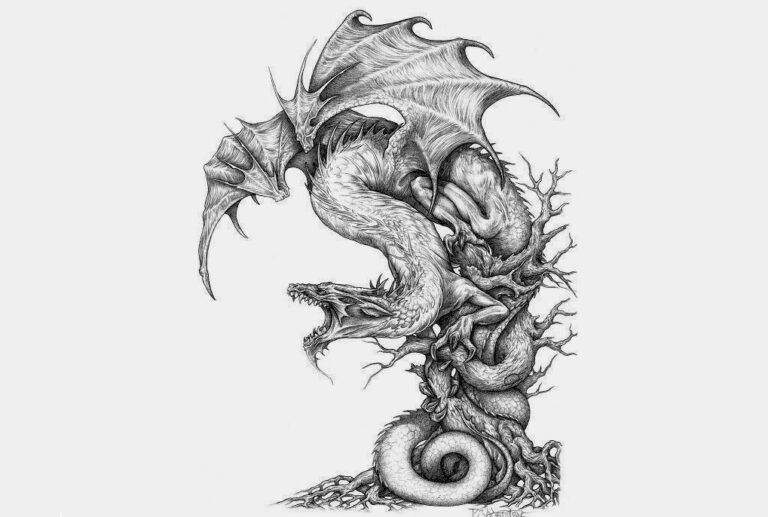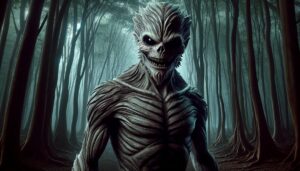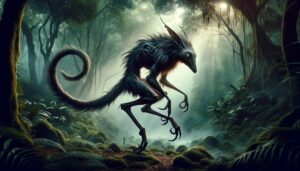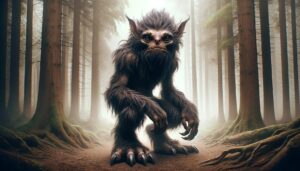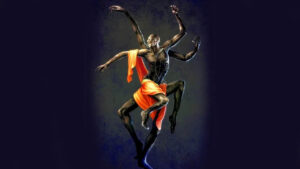Table of Contents
What is a Dragon?
Dragons are legendary creatures that appear in the folklore of various cultures worldwide. While their specific characteristics vary, common traits include serpentine or reptilian bodies, wings, claws, and the ability to breathe fire. Dragons symbolize power, wisdom, and often represent both benevolent and malevolent forces. They feature prominently in mythology, literature, and art, with notable examples such as European dragons, Chinese dragons, and the dragon Smaug in J.R.R. Tolkien’s “The Hobbit.” The portrayal of dragons varies across cultures, ranging from fearsome foes to wise guardians or bringers of good fortune.
The Evolution of the Dragon
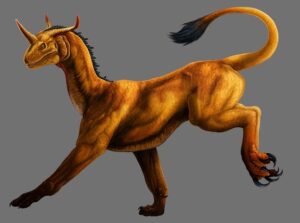
The concept of dragons has dynamically evolved across history and cultures. In ancient civilizations, dragons symbolized chaos and were adversaries to gods or heroes. East Asian dragons, in contrast, represented benevolent forces associated with water and good fortune.
European folklore portrayed dragons as menacing creatures guarding treasure, often defeated by heroic knights like in the legend of Saint George. In medieval Christianity, dragons symbolized evil and were overcome by virtuous figures, reflecting the triumph of Christianity.
Literary adaptations, such as Tolkien’s Smaug and dragons in George R.R. Martin’s works, portrayed dragons with unique personalities, exploring their complexity. Dragons have become iconic in the fantasy genre, shaping fantastical worlds in books, films, and games.
Cinematic advancements, as seen in movies like “How to Train Your Dragon” and “The Hobbit,” offer visually stunning portrayals of dragons with intricate designs and distinct personalities. Dragons remain prevalent in popular culture, captivating audiences in video games, TV series, and merchandise.
Throughout this evolution, dragons reflect cultural and creative shifts, showcasing their dynamic nature in human storytelling. From ancient symbols of chaos to modern depictions as intelligent beings, dragons continue to enchant and symbolize various themes in the collective imagination.
Myths Associated with Dragons
European Dragon Slayers: In European myths, heroes or saints actively slay dragons, rescuing princesses or protecting kingdoms. For example, Saint George engages and defeats a dragon to save a princess and convert a town to Christianity.
Chinese Dragon as a Symbol of Good Fortune: Chinese mythology actively portrays dragons as benevolent creatures associated with water, rain, and good fortune. During the Dragon Boat Festival, people actively race dragon-shaped boats for a good harvest and disease prevention.
Norse Dragons and Ragnarök: Norse mythology involves dragons like Jörmungandr and Níðhǫggr actively participating in events leading to Ragnarök. The prophecy of Ragnarök actively describes the release of Jörmungandr, signaling chaos and destruction.
Mesopotamian Chaos Dragons: In Mesopotamian mythology, Tiamat is actively presented as a chaos dragon associated with primordial chaos. Enuma Elish actively narrates Marduk’s battle against Tiamat to actively establish order in the cosmos.
Dragons in Eastern European Folklore: Eastern European folklore actively features stories of dragons actively guarding treasures in remote places. For example, the Polish legend of the Wawel Dragon actively involves a clever cobbler’s apprentice named Krakus defeating the dragon.
Japanese Dragon Spirits: Japanese mythology actively views dragons as water deities actively protecting sacred sites. Ryūjin, the dragon king of the sea, is actively revered in Japanese mythology.
Aztec Feathered Serpent: Quetzalcoatl, the feathered serpent god in Aztec mythology, actively symbolizes creation and life. Quetzalcoatl actively played a role in the creation of humanity and actively promised to return in the future.
Dragons in Ancient Cultures
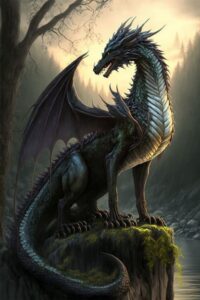
In early cultures, benevolent storm gods defeated giant sea serpents to save mankind. One popular tale involves Yahweh’s predicted battle with the mighty Leviathan, providing insight into modern cultures.
Mushussu (also known as sirrush) was a Mesopotamian dragon attendant to gods, believed to reside in Babylonian palaces. The Babylonian priests challenged the biblical prophet Daniel to match his invisible god (Yahweh) against their living god, leading to Daniel poisoning the mushussu.
Apep, a giant serpent in Egyptian mythology, was the greatest enemy of the sun god Ra. Despite embodying chaos, Apep held significant cultural importance. Depicted as an impressive 48-foot serpent, Apep battled Ra in the underworld during night and morning, causing thunderstorms in clashes with Set (god of storms).
Vritra, a giant dragon in early Vedic religion, personified drought and was considered an evil entity. As the firstborn of dragons, Vritra blocked vital rivers, holding waters hostage until defeated and slain by the benevolent deity Indra.
In modern Christian mythology, Leviathan, described as a serpent, is said to stretch 300 miles, possessing double armored scales, glowing eyes, and the ability to breathe fire. According to legends, there were two Leviathans, and the corruption of these creatures led to the killing of the female to avert the destruction of the world. Prophecy suggests that Yahweh will descend to defeat this serpent during the world’s end.
Greek mythology, heavily influenced by serpents and dragons, features prominent stories like Typhon and Hydra. Typhon, created by Zeus’ mother, terrorized Mount Olympus until Zeus, aided by siblings, overcame the monster. Hydra, a multi-headed serpent in Lerna’s lake, deemed undefeatable, had heads multiply when cut. Hercules defeated Hydra by cutting off heads, cauterizing the wound, and burying the immortal head underground.
Myths of Dragons Across Various Cultures
Dragon Legends Across Cultures Dragons, revered and feared, have left an indelible mark on global folklore. Countless tales depict heroes conquering these beasts, while others highlight dragons aiding humanity. From South African mythology’s Thakane, a dragon-slaying princess, to Europe’s Saint George battling a city-plaguing dragon, these stories reflect diverse cultural interpretations.
The Birth of Gargoyles In early France, La Gargouille, a dragon causing havoc, led to human sacrifices until a priest named Romanus intervened. After building a church, Romanus defeated the dragon, creating the first gargoyle by mounting its head on the city walls.
Norse Legend: The Midgard Serpent In Norse mythology, the Midgard Serpent, a child of the giant Loki, engaged in a destined battle with Thor. Vikings, inspired by this tale, adorned their longships with dragonheads, striking fear into enemies.
Chinese Dragon Kings Chinese mythology holds dragons as benevolent beings, responsible for blessings like good rains. The Dragon Kings, powerful deities residing in crystal palaces under the sea, controlled waters and influenced nature.
Dragon Trainer: Dongfu A man named Dongfu, gifted with understanding dragons, raised them to nobility. Emperor Shin, recognizing his abilities, invited Dongfu to live in the royal palace as a dragon trainer.
Miao Creation Legend The Miao people believe dragons played a role in creating humanity. According to their legend, a Great Dragon breathed life into monkeys, giving rise to the first humans.
Origins of Dragon Myths Dragon myths’ origins are diverse, ranging from inspiration drawn from existing creatures, including crocodiles and monitor lizards, to theories involving undiscovered reptilian species and fossil remains. Additionally, religious motifs, exemplified by Mesopotamian storm god myths, and primal fear instincts towards reptiles may have contributed to the creation of dragon legends.
Dragon in Modern Culture
Dragons continue to take center stage in various forms of entertainment, literature, and popular media, showcasing their enduring prominence in contemporary culture. The representation of modern dragons in literature and fantasy novels is a noteworthy aspect. Renowned authors such as J.R.R. Tolkien (“The Hobbit,” “The Lord of the Rings”) and George R.R. Martin (“A Song of Ice and Fire” series, adapted into “Game of Thrones”) have prominently featured dragons as central elements in their fictional worlds.
In the realm of movies and television, dragons are consistently depicted. Examples abound in notable works such as the “How to Train Your Dragon” animated film series, the “Hobbit” film trilogy, and the aforementioned “Game of Thrones,” where dragons play pivotal roles in shaping the storyline.
Video games also contribute to the prevalence of dragons in contemporary culture, portraying them as formidable foes or powerful allies. Games like “The Elder Scrolls V: Skyrim” and the “Dragon Age” series integrate dragons as significant elements in their captivating narratives.
In East Asian cultures, dragons maintain their symbolic significance as representations of power and good fortune. They manifest across various forms of entertainment, including anime, manga, and video games, with examples like the Dragon Ball series and the Pokémon character Dragonite.
Dragons stand as iconic creatures in tabletop and video game RPGs, as exemplified by games like Dungeons & Dragons (D&D). In these realms, dragons assume roles as powerful adversaries and potential allies, each characterized by distinct features based on color and alignment.
Online culture further embraces the dragon motif, as dragons frequently make appearances in online communities, memes, and digital art. Internet culture creatively and humorously incorporates dragons in various ways, solidifying their enduring presence in the virtual realm.
Embracing the Year of the Dragon
The Chinese zodiac encompasses 12 animal signs, each linked to distinct personality traits. The Dragon Year, occurring once every 12 years, is a captivating aspect of this cycle. The dragon, a symbol of strength, good fortune, and excellence in Chinese culture, holds significant meaning during this period.
Individuals born in the Year of the Dragon embody confidence, ambition, and charisma. As natural leaders, they fearlessly take risks, pursuing goals with unwavering determination. Additionally, Dragons are associated with intelligence, courage, and a profound sense of responsibility, believed to bring good luck and success to those in their sphere.
Social butterflies by nature, Dragon individuals revel in companionship. Furthermore, their charisma inspires enthusiasm in others, making them magnetic figures in social circles. With an innate ambitious streak, Dragons tackle goals with unyielding determination, often achieving remarkable success.
In this auspicious time, the Year of the Dragon blesses individuals with exceptional luck and prosperity. Dragons, infusing life with energy and dynamism, stand out across various facets of their existence.
Transitioning to the realm of compatibility, Dragons align harmoniously with the Monkey and the Rat, yet may encounter challenges with the Dog. This intricate interplay of personalities adds depth to the rich tapestry of the Chinese zodiac, making the Year of the Dragon a period marked by vigor, achievement, and magnetic charisma.
Dragon FAQ
What is a dragon weak against?
The weaknesses of dragons vary across different mythologies and stories. In Western mythology, dragons are often depicted as vulnerable to a hero's courage and wit. In some cases, they may have specific vulnerabilities, such as a weakness to certain metals like iron or a dragon's own greed.
What is a blue dragon?
A blue dragon can refer to a mythical creature or a fictional dragon characterized by its blue scales. Blue dragons are often associated with water and are sometimes portrayed as guardians of oceans or lakes. In the context of Dungeons & Dragons (D&D), a popular fantasy role-playing game, blue dragons are chromatic dragons with an affinity for electricity.
What is an angry dragon?
An "angry dragon" could be a term used humorously or metaphorically, but it doesn't refer to a specific mythical creature. Dragons are often depicted as fierce and powerful, so the term might be used to describe a dragon in a state of anger or aggression.
Where is the tail of the dragon?
This could be metaphorical or refer to a specific location in mythology or folklore. The phrase "tail of the dragon" is sometimes used to describe a winding or treacherous road, such as the Tail of the Dragon in the United States, a famous section of U.S. Route 129.
When is the year of the dragon?
In the Chinese zodiac, the Year of the Dragon occurs in a 12-year cycle. The most recent Year of the Dragon was in 2012, and the next one will be in 2024.
What does a dragon tattoo mean?
The meaning of a dragon tattoo can vary based on cultural and personal interpretations. In some cases, it may symbolize strength, power, and protection. In other cultures, it could represent wisdom or a connection to mythical forces.
Who is dragon in Bible?
The most well-known reference to a dragon is in the Book of Revelation in the New Testament. In Revelation 12:3-4 (New International Version), it is written:
"Then another sign appeared in heaven: an enormous red dragon with seven heads and ten horns and seven crowns on its heads. Its tail swept a third of the stars out of the sky and flung them to the earth. The dragon stood in front of the woman who was about to give birth, so that it might devour her child the moment he was born."
